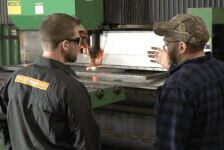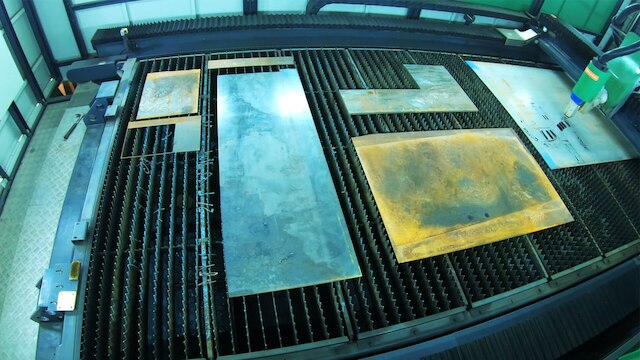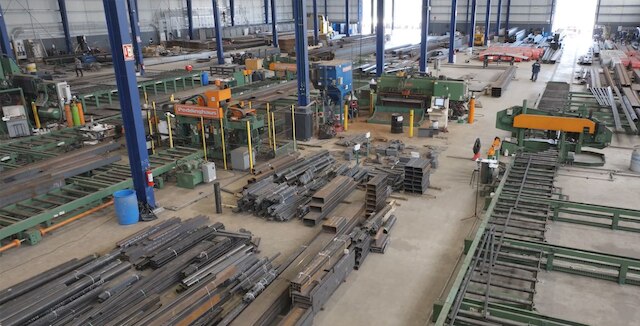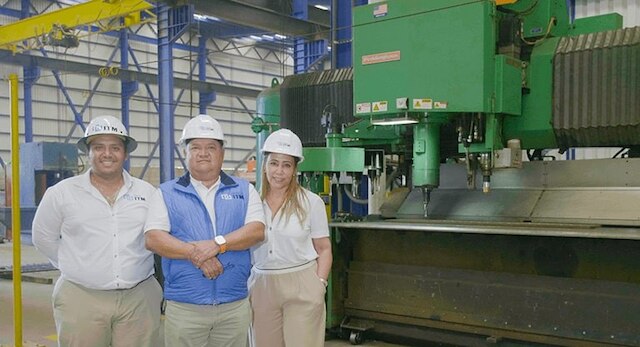The Impact of the COVID-19 Pandemic on Construction Activity
PeddiNews: John Cross Update


The structural steel industry and the broader construction industry are only starting to feel the full impact of the COVID-19 pandemic. As discussed in last month’s article, the momentum of current construction projects typically carries the industry forward for between one and two quarters before feeling the impacts of a recession. However, in this crisis a dip in construction activity is already being experienced. This initial slowing of construction activity is a function of construction sites being closed, supply chains being disrupted and increasing absenteeism among workers. Members of the Associated General Contractors (AGC) are already reporting an increase in the number of owners canceling or deferring future projects. The magnitude of this dip in project activity and the rapidity of the recovery will depend on the effective balancing of the health-related restraints put on economic activity and the ability of the economy to retain and create jobs.
At this point in time it is impossible to accurately predict how deep, how long or how fast the impact on construction activity will be. However, even as it is impossible to accurately predict the future there are signposts along the road to recovery that can provide valuable insights and perspectives regarding the recession’s depth, length and rate of recovery.
Signpost #1 - The Effectiveness of Flattening-the-Curve
“Flattening-the-curve” has now become a common term in our vocabulary. Social distancing, travel restrictions, closing of non-essential businesses and stay-at-home orders have been necessary to slow the spread of the virus. Those efforts seem to have slowed the spread and allowed the health care industry to manage the level of demand. But flattening-the-curve is only the front end of the process. Restrictions will stay in place until the number of cases are reduced and maintained at a lower level. The key question will be what level of business activity can occur while still maintaining a low spread rate? While the answer is critical from a personal health standpoint, it is also critical from an economic perspective.
There is much discussion among economists as to whether this recession will be shaped like a “V” (fast down and an immediate bounce back up) or a “U” (fast down, extended low and then a rapid rise back to pre-recession levels). In fact, some economists are suggesting that it will be the shape of a hockey stick (fast down, flat bottom, slow rise), but all are expressing that their greatest fear is a “W-shaped” recession where the economy begins a recovery and then again retreats. The long term impact of a “W” isn’t just another recessionary period, but a systemic loss of consumer confidence that will extend the economic down cycle. So the question becomes, “what would cause a “W”? A “W” would result if the infection curve has been flattened, the rate of spread reduced and restrictions relaxed and then there is a noticeable increase in cases resulting in the reapplication of the restrictions seen during April of this year.
Between now and the Spring of 2021 when an effective vaccine may be available, it will be important to watch the rate of spread of the virus. If business activities can be resumed with a low rate of spread being maintained, there will be a lower level of impact on construction activity with a fairly robust recovery expected following the release of the vaccine. If the spread rate begins to accelerate, construction activity will be diminished further and the impact of the recession will extend beyond the release of the vaccine.
Signpost #2 - Employment and Economic Activity in Real Terms
In addition to tracking the progress of the pandemic, two key economic indicators to focus on during the recession are the number of workers that are employed and the Gross Domestic Product (GDP) in dollars. The federal government and the press will report these as percentages – the unemployment rate and the rate of change of GDP. During a recessionary period those percentage reports are essentially meaningless. What matters is the number of people working and the size of our economy.
Unemployment is a serious problem, but it is a social problem not an economic problem. The number of people actually working is what drives the economy and with it construction activity. It is estimated that since mid-March the economy has shed 26 million jobs returning to the lowest level during the Great Recession in 2010.
During the recovery from the Great Recession, both the Obama and Trump administrations congratulated themselves on a decreasing unemployment rate and the monthly addition of 200,000 new jobs to the economy. At that pace, employment didn’t reach pre-recession levels until 2014. It was at that point that construction demand picked up to address the increased demand for offices, manufacturing facilities and commercial properties. At the rate of job creation experienced after the Great Recession, it will take 9 years to recover the 26 million jobs that have been lost.
I am optimistic that we will recover jobs much more quickly this time, but it will take time. Some businesses will not reopen after a forced shutdown and history tells us that after any recession, employers are reticent to re-staff at the same level as before the recession. These businesses will seek to minimize risk of a future downturn by choosing to pay overtime to a smaller staff.
It will also be necessary to track the actual level of the Gross Domestic Product, not just the rate of increase publicized in the press. Officially, the Great Recession lasted until the third quarter of 2009 when growth turned positive. While the economy again began to grow at that point, GDP did not reach the level it had experienced at the start of the recession until a year later at the end of the 2nd quarter of 2010, at which time the dip in construction demand stabilized. Construction activity will not return to pre-recession levels until employment and GDP return to pre-recession levels.
Signpost #3 - Industry Leading Indicators
A “leading” indicator provides an advanced sense of where the marketplace is headed. There are two widely available leading indicators that provide a forward look into the building marketplace: the Architects Billing Index (ABI) published by the American Institute of Architects (AIA) and the Dodge Momentum Index (DMI).
The ABI is based on data collected in a monthly survey of architectural firms by AIA. The index is based on the ratio of the number of firms with billings increasing versus firms with billings decreasing. If the same number of firms have billings increasing as decreasing, the index value is 50. The ABI does not track the magnitude of billing changes or project value, only the momentum of the marketplace. Over the past several years, the ABI has varied between 50 and 55 indicating an increase in architectural activity which suggests an increase in construction activity over time. The ABI tends to lead an increase in construction starts by 2 to 3 quarters.
The ABI for March of 2020 published on April 22nd was the lowest in the history of the index at 33.3. This does not mean that architectural billings dropped by 33 percent during the month of March. What it means is that for every architectural firm that saw an increase in billings, two firms saw a decrease in billings. In addition to tracking billings, the ABI also tracks new contracts being signed by architectural firms. The contract index for March of 2020 was 27.1, meaning that for every firm that saw an increase in the number of new contracts, four experienced a decrease in the number of new contracts.
That these numbers are concerning cannot be denied, but they are not sufficient to cause a panic. The nature of the pandemic and the shutdown of non-essential businesses throughout the US has been much more abrupt than the Great Recession. This would account for a much sharper decline. The key to viewing the ABI as a leading indicator of future construction activity will be how the index responds over the next several months. If the index is below 50, it will indicate that the activity is still declining. If it is near 50, it means the drop in activity has stabilized. If it is greater than 50, it will mean that construction activity will be beginning to recover over the next 2 to 3 quarters.
The second leading indicator is the Dodge Momentum Index (DMI). Dodge has long provided reliable data to the construction industry by tracking projects through the development cycle from conceptual planning to project occupancy. The DMI looks at new non-residential projects valued at less than $500 million entering the Dodge database during a given month. Since the Great Recession, the DMI has shown steady albeit a bit choppy growth. This growth is based on estimated project dollars, so it is a good indicator of the anticipated magnitude of construction growth.
The March 2020 report did not show a significant drop in the value of new projects entering the pipeline. This is probably the result of new projects already being evaluated prior to March entering the conceptual stage. It should be anticipated that the DMI will begin to show a significant drop during April. Consistent monitoring of the DMI will provide a sense of both the direction and magnitude of the recovery.
A valuable third leading indicator provides perspective on industrial work rather than non-residential buildings. Since the Great Recession, more fabricated structural steel tonnage has been consumed in the industrial market than in the building market. While it is difficult to assess the split between OEM, building, industrial and other structural uses of structural steel, the data suggests that prior to the Great Recession roughly 45% of structural steel ended up in buildings while 40% ended up in industrial applications. Today those percentages have more than reversed themselves with 35% going into buildings and 50% into industrial applications.
Oil prices are a leading indicator of the level of capital expenditures in the gas, oil, pipeline and refining industries. The current dip in oil prices has resulted from a decrease in demand, domestic self-sufficiency and excess production from Russia and Saudi Arabia. Oil, gas, pipeline and refining companies have significantly reduced their plans for capital expenditures in 2021 and 2022. Those reductions range between 20% and 50% which will reduce the demand for structural steel. Tracking oil prices provides a leading indicator of future industrial activity in this sector.
Signpost #4 - Changes in Human Behavior
Noted economist and Nobel Prize winner Milton Friedman once wrote, “Only a crisis - actual or perceived - produces real change.”
The marketplace will change as a result of changes in human behavior due to the pandemic. Those real changes will impact the mix of project types moving forward. For example, the increasing dependence on delivery services as opposed to in-person will most probably result in an expansion of warehouse construction from its already high levels.
It is too early to determine which changes in human behavior will stick after the pandemic ends. Will there be a hesitation on the part of the general public to travel that will result in a downturn in construction levels for airport terminals and hotels? Will there be reticence to dine-in at restaurants and bars? Will there be an exodus from dense, multi-family housing in the central cities to suburban single-family housing driving an increase in suburban office construction, single-family residences and the associated schools, strip malls and small office spaces? Will the demands placed on hospital facilities switch the emphasis of healthcare construction from clinics to increasing the available bed count? Will the public return to sporting and cultural events? These are all critical questions and observing the cultural changes that unfold over time will be significant signposts to the future of construction activity.

So what is the bottom line in April of 2020?
The United States and the rest of the world is in a recession, and that recession will impact the construction activity. The impact of the recession will continue at least until a vaccine is identified for COVID-19 and common sense returns to the petroleum market. The depth of the downturn and the rapidity of the recovery cannot be confidently estimated at this point, but there is a basis for optimism rooted in the strength of the economy going into the recession and the lack of over-building in the construction sector. By tracking employment levels and the gross domestic product, observing the shape of the recession, watching key leading indicators and studying behavioral shifts will provide good signposts on the way to recovery.
Take care and stay safe.
John Cross, PE has tracked construction activity for 20 years. Until his retirement in 2018 he served as Vice President of Market Development for the American Institute of Steel Construction (AISC) and authored a regular column on the impact that economic trends have on the structural steel market for Modern Steel Construction magazine. He can be reached via email at crosswind.consult@gmail.com.
Enter Today for a Chance to Win FREE Machinery
Gift cards and other Peddinghaus merchandise included

46331 mobile
TO
46331
WINNER
Normal text message rates apply. Text “STOP” to opt out. Text “HELP” for help. Up to 3 msgs / month. Terms https://www.peddinghaus.com/terms/1










